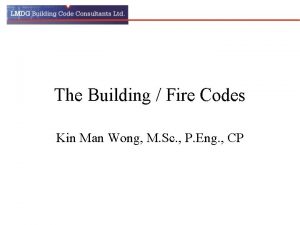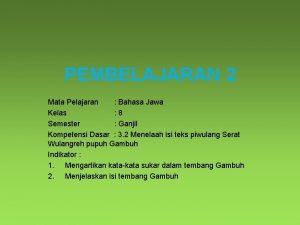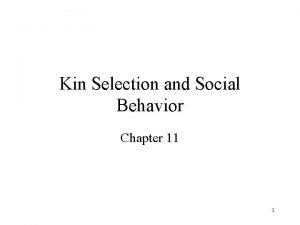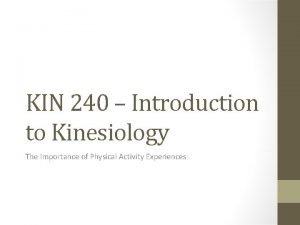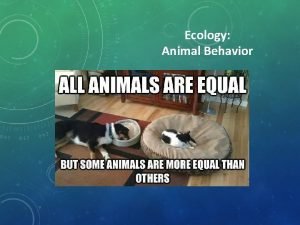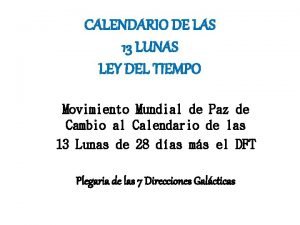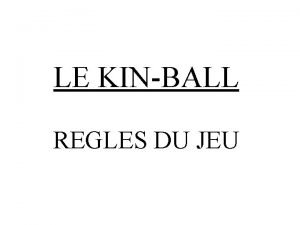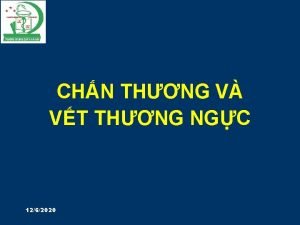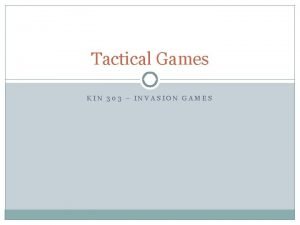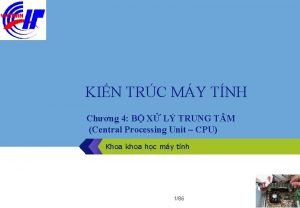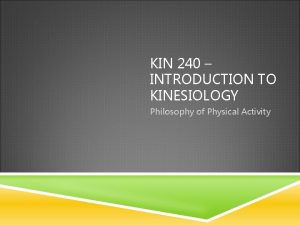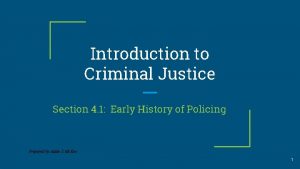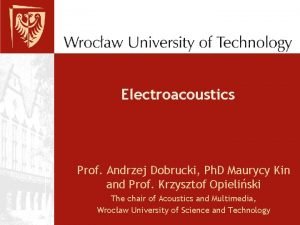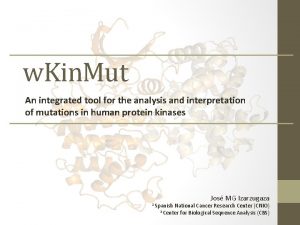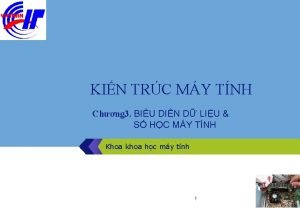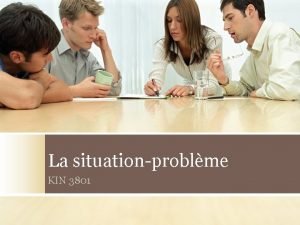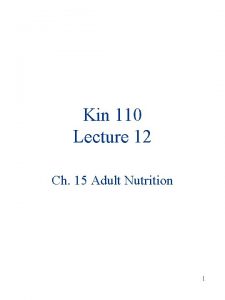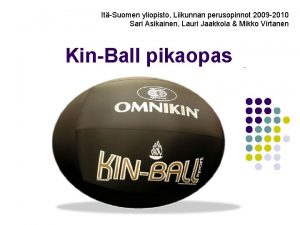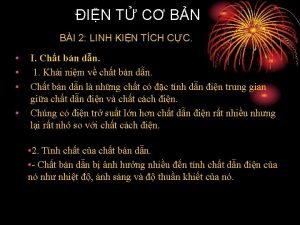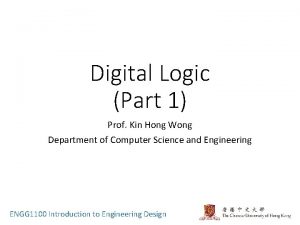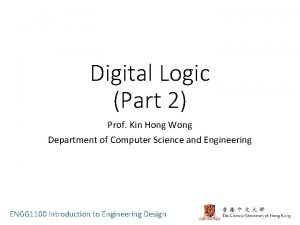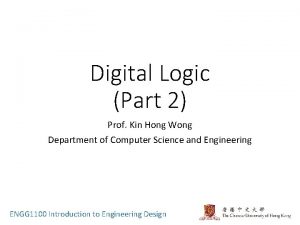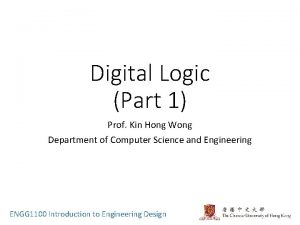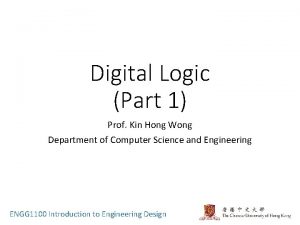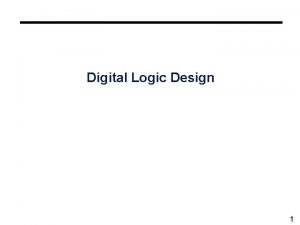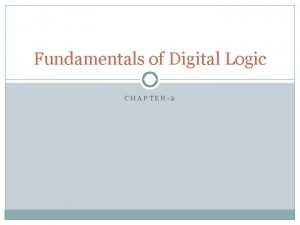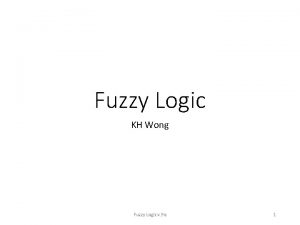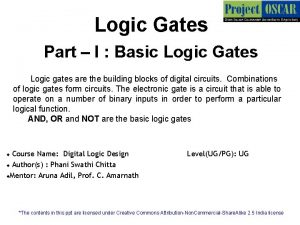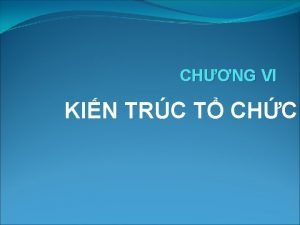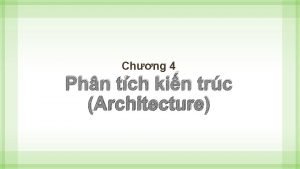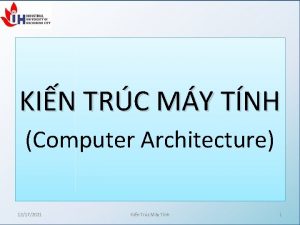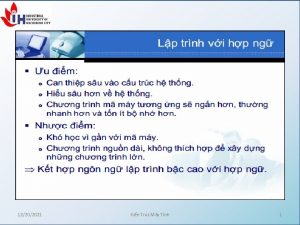Digital Logic Part 2 Prof Kin Hong Wong






































- Slides: 38

Digital Logic (Part 2) Prof. Kin Hong Wong Department of Computer Science and Engineering ENGG 1100 Introduction to Engineering Design

ENGG 1100 | Term 2 | 2014 -15 Overview • Part 1 (last week): Introduction • • • 1. 1 What is Digital logic? 1. 2 Digital operations (AND, OR, NOT) 1. 3 Truth table 1. 4 Robot Hardware 1. 5 Software implement of digital operations • Part 2 : Hardware/software Implementation • • V 15. 02. 16 2. 1 Robot system 2. 1 Use of If-then-else (software method 1) 2. 2 Use of switch case (software method 2) 2. 3 Finite state machines Introduction 2

1. 4 Robot Hardware V 15. 02. 16 Introduction 3

ENGG 1100 | Term 2 | 2014 -15 Robot Hardware • Controlled by an Arduino computer • Write programs and download to run • The robot will be put in a sphere, it has • • V 15. 02. 16 LED display Board 7 -segment display Light seeking sensors Magnetic sensor for power on/off Introduction 4

ENGG 1100 | Term 2 | 2014 -15 The New Intelligent Robot system • Light source Bluetooth Programmer to update the program Magnetic on/off sensor Light sensors S 1 S 2 S 3 S 4 S 5 Inputs S 6 Motor drivers Outputs motors V 15. 02. 16 H-bridge S 2 S 1 Introduction Arduino board (programs to be run in the Arduino computer): : Void Loop { If …. then…. else…. } 5

ENGG 1100 | Term 2 | 2014 -15 Light following design • You need to design the robot to follow a light source • Your work: Program the motor actions responding to which light sensor receives the highest light energy • You learn magnetic strip following method here then find out how to do light following yourself V 15. 02. 16 Introduction Light sensors (Si) S 1 S 2 S 3 S 4 S 5 S 6 Light sensors 6

ENGG 1100 | Term 2 | 2014 -15 Example : the use of sensors • Magnetic Switch Sensors • S 1, S 2, S 3 each can be ‘ 1’ or ‘ 0’ • Magnetic field detected → Si=0 • No Magnetic field detected → Si=1 The robot is facing you S 2 S 3 S 1 V 15. 02. 16 Introduction 7

ENGG 1100 | Term 2 | 2014 -15 Motors of a robot The robot is facing you • Motors: LM 1, LM 2, RM 1 and RM 2 • Instruction LM 1(0) sets LM 1 to be 0 • Instruction LM 1(1) sets LM 1 to be 1 RM 2 LM 1 LM 2 • Motor control method • • V 15. 02. 16 {LM 1=1 and LM 2=0} → Left-motor moves forward {LM 1=0 and LM 2=1} → Left-motor moves backward {LM 1=0 and LM 2=0} → Left-motor stops Similar for the right-motor Introduction 8

ENGG 1100 | Term 2 | 2014 -15 Software: Programing procedures • Document about the use of Arduino • http: //www. arduino. cc/en/Main/Documentation • Edit program • Compile • Download to the SMART-car-board • Run the program V 15. 02. 16 Introduction 9

2. 2 Software Method 1: to implement logic operations in a program using Logic Formula (use of IF-Then-Else) V 15. 02. 16 Introduction 10

ENGG 1100 | Term 2 | 2014 -15 Using two sensors S 2, S 1 to follow a magnetic stripe • Sensors: S 2 S 1 Terminal Magnetic sensors S 1, S 2 Top down view Forward Robot’s front face is facing you Magnetic field detected → Si=0 No Magnetic field detected → Si=1 S 2 V 15. 02. 16 Introduction S 1 11

ENGG 1100 | Term 2 | 2014 -15 Method 1 (Use of If-then-else): This program will enable the robot to follow the magnetic path The program segment: void loop() { LM 1(0); LM 2(0); RM 1(0); RM 2(0); //comment : LM 1 =S 1 AND S 2 If (S 1()==1 && S 2()==1) LM 1(1); else LM 1(0); • Notations used in the program • Void Loop ( )= repeated the execution of the lines inside { } • LM 1(0) sets the digital output LM 1 to 0 • LM 1(1) sets the digital output LM 1 to 1 • == means condition • && means logic operation AND • || means logic operation OR • ! means logic operation NOT • //comment, for you to put in your own notes //comment : LM 2 = S 1 OR S 2 If (S 1()==1 || S 2()==1) LM 2(1); else LM 2(0); } You may need to write S 1(), S 2(), LM 1(), LM 2(), etc. for your own system RM 1 RM 2 LM 1 LM 2 S 2 V 15. 02. 16 Introduction S 1 12

ENGG 1100 | Term 2 | 2014 -15 Notations used in the program • Void Loop( )= repeated the execution of the lines inside { } • Void Loop () • { • … to be repeated infinitely……. • } • == means condition • && means logic operation AND • || means logic operation OR • ! means logic operation NOT • //comment, for you to put in your own notes V 15. 02. 16 Introduction 13

2. 2 Software Method 2 : to implement logic operation in a program using truth table (Use of Switch-Case) V 15. 02. 16 Introduction 14

ENGG 1100 | Term 2 | 2014 -15 Exercise 2. 1: Truth table example to make our robot to follow the magnetic strip Magnetic strip • Case Robot 1) S 1=1 (no mag. strip detected) , Fill in the table (control truth table) S 2=1 (no mag. strip detected) Case Inputs Outputs S 1 S 2 on both sides of magnetic strips: Robot should move S 1 S 2 LM 1 LM 2 RM 1 RM 2 forward 1) 1 1 1 0 2) S 1=1, S 2=0 (robot deviates to S 1 S 2 2) 1 0 ? __ the left side of the magnetic strip): Robot should turn right 3) 0 1 ? __ 3) S 1=0, S 2=1 (robot deviates to the right side of the magnetic 4) 0 0 ? __ S 1 S 2 strip): Robot should turn left 4) S 1=0, S 2=0 (robot reaches the forward: LM 1, LM 2, RM 1, RM 2=“ 1010” terminal) : Robot should stop turn right: LM 1, LM 2, RM 1, RM 2=“ 1000” Magnetic field detected → Si=0 No Magnetic field detected → Si=1 V 15. 02. 16 S 1 S 2 Introduction turn left: LM 1, LM 2, RM 1, RM 2=“ 0010” 15

ENGG 1100 | Term 2 | 2014 -15 After the truth table is obtained we will use “Switch – case” in a program to implement it • You may treat it as a table lookup method • In English it means: • If INPUT is code 1, result 1 will occur • If INPUT is code 2, result 2 will occur • If INPUT is code 3, result 3 will occur • Etc…… switch (INPUT) { case code 1 : result 1; break; case code 2 : result 2; break; case code 3 : result 3; break; : } V 15. 02. 16 Code_i=inputs for row i of a truth table Result_i=output for row i of a truth table Introduction 16

ENGG 1100 | Term 2 | 2014 -15 Program example for our robot You only need to edit the program to change the desired truth table The program segment that produces the truth table on the right void Logic. Table() { // S 2, S 1 are the least significant 4 bits of IN_sensor in switch (IN_sensor) // 0 b 00 FEDCBA { Inputs case 0 bxxxxxx 11 : LM 1(1); LM 2(0); RM 1(1); RM 2(0); S 2 1 break; 1 case 0 bxxxxxx 10 : LM 1(1); LM 2(0); RM 1(0); RM 2(0); 0 break; 0 case 0 bxxxxxx 01 : LM 1(0); LM 2(0); RM 1(1); RM 2(0); break; default : LM 1(0); LM 2(0); RM 1(0); RM 2(0 ); Magnetic break; } S 1, S 3 } Only the last two bits are used as S 2 and S 1 the program S 1 1 0 LM 1 1 1 0 0 Outputs LM 2 RM 1 0 0 0 1 0 0 RM 2 0 0 sensors S 2 S 3 S 1 V 15. 02. 16 Introduction 17

2. 3 Introduction to Finite State Machines V 15. 02. 16 Introduction 18

ENGG 1100 | Term 2 | 2014 -15 Introduction to Finite State Machines • We will have three examples here: a) Simple finite state machine (no sensor). E. g. : The dancing robot b) An finite state machine uses 2 sensors. E. g. : The robot that follows the magnetic strip c) An finite state machine uses 3 sensors. E. g. : The robot that follows the magnetic strip, and stops when it detects a magnet in front of the robot. V 15. 02. 16 Introduction 19

ENGG 1100 | Term 2 | 2014 -15 Understanding finite state machines • Example of a door – State – Transition condition – Entry action http: //en. wikipedia. org/wiki/State_diagram V 15. 02. 16 Introduction 20

ENGG 1100 | Term 2 | 2014 -15 Example in Life State 1: Year 1 Reg. 12 courses State of a student at CUHK • Start: go to state 1 • State 1=Year 1: go to state 2 after 1 year State 2: Year 2 Reg. 12 courses – entry action: register 12 courses – Transition: go to state 2 after 1 year • State 2=Year 2: go to state 3 after 1 year – entry action: register 12 courses – Transition: go to state 3 after 1 year • State 3=Year 3: State 3: Year 3 Reg. 12 courses – entry action: register 12 courses – Transition: go to state 4 after 1 year • State 4=Year 4: – entry action: register 8 courses and FYP Final_year_project – Transition: go to stop after 1 year • Stop: Graduation V 15. 02. 16 graduation Introduction go to state 4 after 1 year State 4: Year 4 Reg. 8 Courses & FYP 21

ENGG 1100 | Term 2 | 2014 -15 2. 3 a) The Simple State Machine (No transition condition) • The robot that dances with a pattern • Forward 2 seconds, turn left 2 seconds and turn right 2 seconds, stop and repeat the pattern again • Video demo: • http: //youtu. be/iyakb. Vyoaf. I V 15. 02. 16 Introduction 22

ENGG 1100 | Term 2 | 2014 -15 Simple finite state machine for (3 a) : No sensor input (no transition condition) Entry actions Start Transition State 1 Output: LM 1, LM 2, RM 1, RM 2=1010 Entry action: Move Forward Transition: After 2 seconds State 2 State 4 E: Turn Left E: Stop Output: LM 1, LM 2, RM 1, RM 2=0000 After 2 seconds State 3 Output: LM 1, LM 2, RM 1, RM 2=0010 E: Turn Right Output: LM 1, LM 2, RM 1, RM 2=1000 V 15. 02. 16 Introduction Flow diagram Basic form 23

ENGG 1100 | Term 2 | 2014 -15 Implementation of the finite state Use of DELAY: machine for (3 a) DELAY_TIME=2000 motors(LM 1, LM 2, RM 1, RM 2, SPEED, DEL AY_TIME); • Part of the sample source code is shown below: Set motor to run forward with speed=200 switch(state) { case STATE 1: LM 1=1; LM 2=0; RM 1=1; RM 2=0; SPEED=200; //entry action DELAY_TIME=2000; // transition : delay 2 seconds motors(LM 1, LM 2, RM 1, RM 2, SPEED, DELAY_TIME); state=STATE 2; // next state will be state 2 break; //end of the current state case STATE 2: You may need to write the function motors( ) for your project LM 1=0; LM 2=0; RM 1=1; RM 2=0; SPEED=200; DELAY_TIME=2000; // delay 2 seconds motors(LM 1, LM 2, RM 1, RM 2, SPEED, DELAY_TIME); state=STATE 3; //next state will be state 3 break; //end of the current state // to be continued on next page Exercise: explain the meaning of state 2 V 15. 02. 16 Introduction 24

ENGG 1100 | Term 2 | 2014 -15 Exercise 2. 2 case STATE 3: (fill in by students) break; case STATE 4: (fill in by students) break; default: //none of above will be forced to run state 4 state=STATE 4; break; } Exercise 2. 2: Fill in the missing programs in state 3 and 4 V 15. 02. 16 Introduction 25

ENGG 1100 | Term 2 | 2014 -15 2. 3 b) A finite state machine uses 2 sensors (with transition condition) • E. g. The robot that follows the magnetic strip V 15. 02. 16 Introduction 26

ENGG 1100 | Term 2 | 2014 -15 Example in Life (with transition condition: study hard) State of a student at CUHK • Start:go to state 1 • State 1=Year 1: – entry action: register 12 courses – Transition: if (study hard) promote to state 2 (year 2) else go back to state 1 • State 2=Year 2: – entry action: register 12 courses – Transition: if (study hard) promote to state 3 (year 3) else go back to state 2 • State 3=Year 3: – entry action: register 12 courses – Transition: if (study hard) promote to state 4 (year 4) else go back to state 3 • State 4=Year 4: – entry action: register 12 courses – Transition: if (study hard) promote to stop(graduation) else back go to state 4 • Stop: Graduation V 15. 02. 16 Introduction 27

ENGG 1100 | Term 2 | 2014 -15 Demo for 2. 3 b) An finite state machine uses 2 sensors • The robot can follow the magnetic strip • Video Demo: • http: //youtu. be/NWHj. Wrq_Vo. Y • Demo programs may be available from the e. Learning: https: //elearn. cuhk. edu. hk/webapps/login/ Workshop 2: Introduction to Arduino Two-State FSM demo 7. 4 b V 15. 02. 16 Introduction 28

ENGG 1100 | Term 2 | 2014 -15 2. 3 c) Add another sensor at the front to detect the target object • Sensors: S 2, S 1 are facing the ground to detect the magnetic strip • S 3 is facing the front, used to detect the target object • S 3=1 if no object is detected • S 3=0 if an object is detected Magnetic sensors S 1, S 3 S 2 S 3 S 1 V 15. 02. 16 Introduction 29

ENGG 1100 | Term 2 | 2014 -15 A finite state machine uses 3 sensors E. g. Follow the magnetic strip, find the CAN and stop • Video Demo : http: //youtu. be/JEQkuax 7 l. KE • The robot finds the CAN using the magnetic strip placed under the testing board and stops End point S 1 Obstacle LM 1, LM 2 S 3 S 2 Start point RM 1, RM 2 V 15. 02. 16 Introduction 30

ENGG 1100 | Term 2 | 2014 -15 Finite state machine using 3 sensors (s 1, s 2, s 3) with transition conditions for (3 c) V 15. 02. 16 Flow diagram Basic form Introduction 31

ENGG 1100 | Term 2 | 2014 -15 Program 3 c (S 1, S 2, S 3 are used) S 1, S 2 for following the magnetic strip S 3 for detecting the CAN The sample source code (program_segment 3) is shown below: switch(state) { case STATE 1: // forward for 1 second LM 1=1; LM 2=0; RM 1=1; RM 2=0; If S 3=0, a CAN is detected, next state is state 4 SPEED=200; DELAY_TIME=10; motors(LM 1, LM 2, RM 1, RM 2, SPEED, DELAY_TIME); // if ( S 3()==1 && S 2()==1 && S 1()=0 ) state=STATE 2; Move forward for 1 second Robot deviated to the right, goto state 2 else if(S 3()==1 && S 2()==0 && S 1()=1) state=STATE 3; else if((S 3==0) || (S 3()==1 && S 2()==0 && S 1()=0)) state=STATE 4; break; case STATE 2: //robot turns left LM 1=0; LM 2=0; RM 1=1; RM 2=0; SPEED=200; DELAY_TIME=10; motors(LM 1, LM 2, RM 1, RM 2, SPEED, DELAY_TIME); Robot deviated to the left goto state 3 // if ( S 3()==1 && S 2()==1 && S 1()=1 ) state=STATE 1; // back to state 1 else if(S 3()==1 && S 2()==0 && S 1()=1) state=STATE 3; else if((S 3==0) || (S 3()==1 && S 2()==0 && S 1()=0)) state=STATE 4; V 15. 02. 16 Introduction break; 32

ENGG 1100 | Term 2 | 2014 -15 case STATE 3: //robot turns right // To be filled by students as an exercise case STATE 4: //stop // To be filled by students as an exercise default: //none of above states state=STATE 4; LM 1=0; LM 2=0; RM 1=0; RM 2=0; SPEED=200; DELAY_TIME=10; motors(LM 1, LM 2, RM 1, RM 2, SPEED, DELAY_TIME); break; } V 15. 02. 16 Introduction 33

ENGG 1100 | Term 2 | 2014 -15 A Demo (2013 -4) • A demo of a robot carrying two CANs and bring them simultaneously to the destination. • http: //www. youtube. com/watch? v=ze 2 rwp. XVXY&feature=youtu. be • Arduino software: http: //arduino. cc/en/Main/Software#toc 1 V 15. 02. 16 Introduction 34

ENGG 1100 | Term 2 | 2014 -15 Overall Summary • In digital logic part 1 and 2, we learned • What is digital logic • Digital logic operations represented by • Digital logic formula method • Truth table method • Their implementation methods using programs • Finite state machines • Theory and implementations • Use the above to control a robot for specific tasks V 15. 02. 16 Introduction 35

END V 15. 02. 16 Introduction 36

ENGG 1100 | Term 2 | 2014 -15 Appendix A : Answer: Exercise 2. 1: Truth table example to make our robot follow the magnetic strip • Case 1) S 1=1 (no mag. strip 2) 3) 4) detected) , S 2=1 (no mag. strip detected) on both sides of magnetic strips: Robot should move forward S 1=1, S 2=0 (robot deviates to the left side of the magnetic strip): Robot should turn right S 1=0, S 2=1 (robot deviates to the right side of the magnetic strip): Robot should turn left S 1=0, S 2=0 (robot reaches the terminal) : Robot should stop Magnetic field detected → Si=0 No Magnetic field detected → Si=1 V 15. 02. 16 Magnetic strip Robot S 1 S 2 Introduction Case Fill in the table Inputs Outputs S 1 S 2 LM 1 LM 2 RM 1 RM 2 1) 1 1 1 0 2) 1 0 0 0 3) 0 1 0 4) 0 0 0 forward: LM 1, LM 2, RM 1, RM 2=“ 1010” turn right: LM 1, LM 2, RM 1, RM 2=“ 1000” turn left: LM 1, LM 2, RM 1, RM 2=“ 0010” 37

ENGG 1100 | Term 2 | 2014 -15 Appendix B: Answer for Ex 2. 3 case STATE 3: LM 1=1; LM 2=0; RM 1=0; RM 2=0; DELAY_TIME=2000; motors(LM 1, LM 2, RM 1, RM 2, SPEED, DELAY_TIME); state=STATE 4; break; case STATE 4: LM 1=0; LM 2=0; RM 1=0; RM 2=0; SPEED=200; DELAY_TIME=2000; motors(LM 1, LM 2, RM 1, RM 2, SPEED, DELAY_TIME); state=STATE 1; break; default: //none of above will be forced to run state 4 state=STATE 4; break; } V 15. 02. 16 Exercises: explain the meaning of state 3 and 4 Introduction 38
 Wong kin man
Wong kin man Apa tegese aja nganti kebanjur ing tembang gambuh
Apa tegese aja nganti kebanjur ing tembang gambuh First order logic vs propositional logic
First order logic vs propositional logic First order logic vs propositional logic
First order logic vs propositional logic Third order logic
Third order logic Combinational vs sequential logic
Combinational vs sequential logic Cryptarithmetic problem logic+logic=prolog
Cryptarithmetic problem logic+logic=prolog Software development plan
Software development plan Majority circuit
Majority circuit Combinational logic sequential logic 차이
Combinational logic sequential logic 차이 Logic chapter 3
Logic chapter 3 D kin
D kin Hamilton's rule kin selection
Hamilton's rule kin selection Kin 240
Kin 240 Kin selection
Kin selection Calendario 13 lunas 2020
Calendario 13 lunas 2020 Kin ball cycle 2
Kin ball cycle 2 Kin 464
Kin 464 Chấn thương ngực kín slide
Chấn thương ngực kín slide William hamilton kin selection
William hamilton kin selection Life orientation grade 7 term 2 activities
Life orientation grade 7 term 2 activities Kin tes
Kin tes Logo kin
Logo kin Exclusively equine vet
Exclusively equine vet Kin 257
Kin 257 Kin 240
Kin 240 Kin policing
Kin policing Dr kin tsui
Dr kin tsui Andrzej kin
Andrzej kin Svm kernel
Svm kernel 7a16 bằng bao nhiêu hệ thập phân
7a16 bằng bao nhiêu hệ thập phân Kin 240
Kin 240 Kin 464
Kin 464 Kin 110
Kin 110 Kin 110
Kin 110 Kin ball säännöt
Kin ball säännöt Linh kin
Linh kin Kin games
Kin games I sut
I sut
